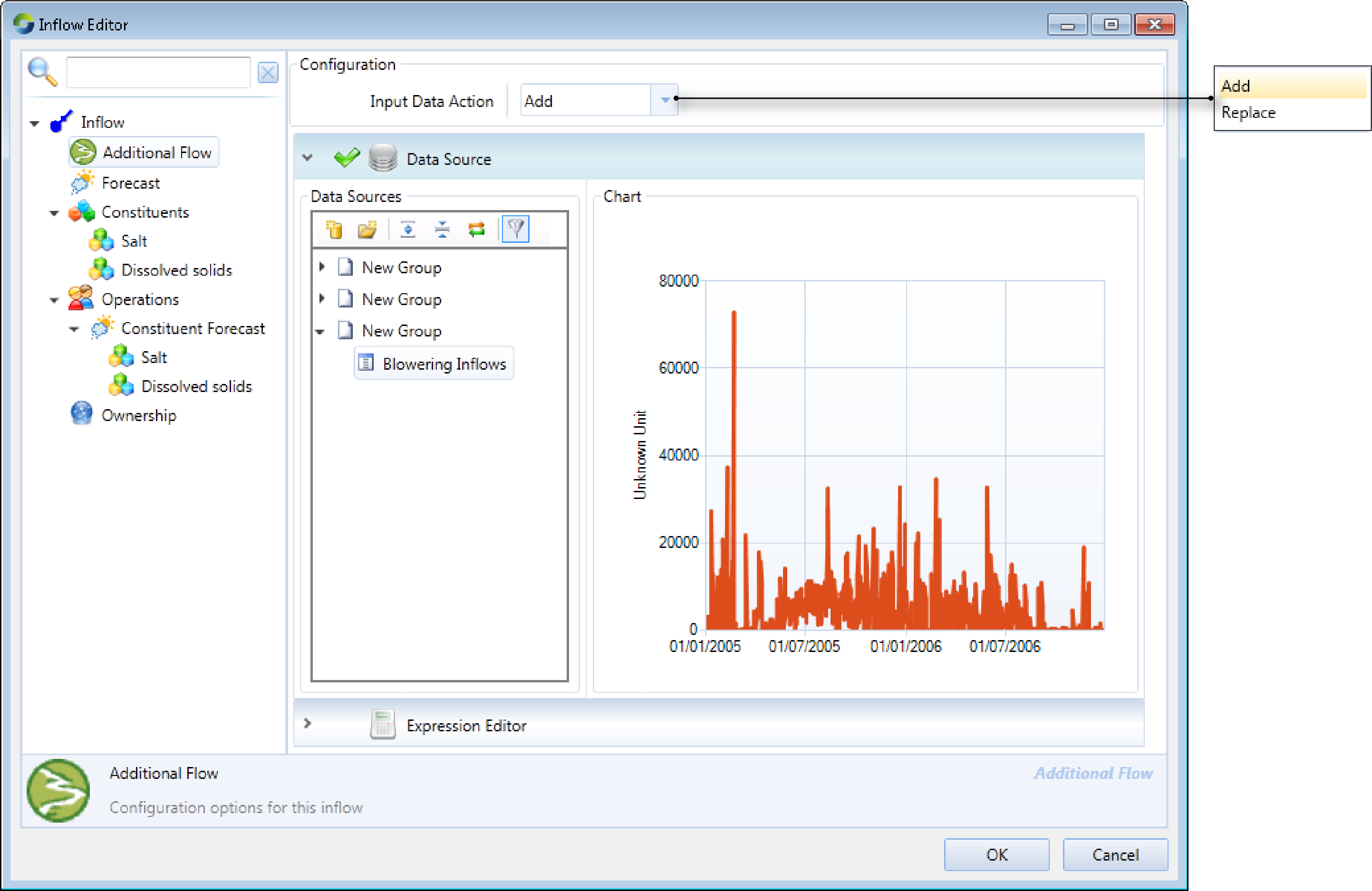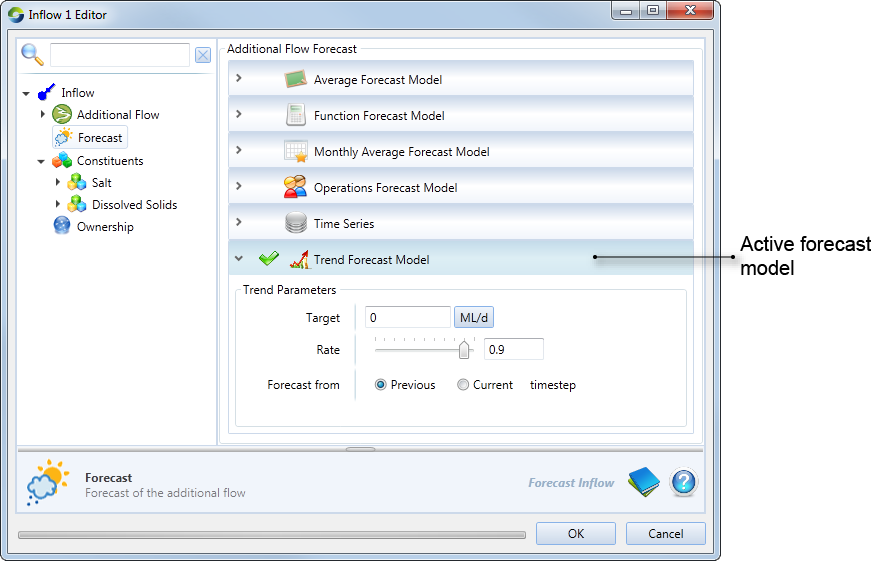Inflow node
The Inflow node allows you to define flows into your model. Inflows include runoff generated for defined headwater and residual catchment areas in the river system, point sources of water such as inter-basin transfers, and return flows from water users. Inflows are not used to account for rain falling directly on water bodies.
Figure 1. Inflow node, Additional flow

Figure 1 shows the feature editor of an inflow node. You can describe inflows either by defining an expression or function, or by supplying a time series. Click Data Sources to load a time series in the node. Table 1 shows the format of a comma-separated (.CSV) file for providing time-series data.
Table 1. Inflow node (data file format)
| Row | Column (comma-separated) | |
|---|---|---|
| 1 | 2 | |
| 1 | date | value |
Forecasting inflows
Selecting Forecast (Figure 2) allows you to forecast flows in two ways. Unlike Operations, it does not require a run of the warm period to initialise its calculations. The Operations Forecast Model is used in an ordering system, and determines how much flow might occur. These forecasts are needed in addition to what is in storages to determine how much water might be available to distribute in the current and coming days. As its name suggests, Recession Forecast Model creates a recession forecast model for the network defined in the Schematic Editor.
Figure 2. Inflow node (forecast)
Constituents
Prior to configuring constituents at an inflow node, ensure that they have been defined using Edit » Constituents. For more information on configuring them, refer to Inflow node.

